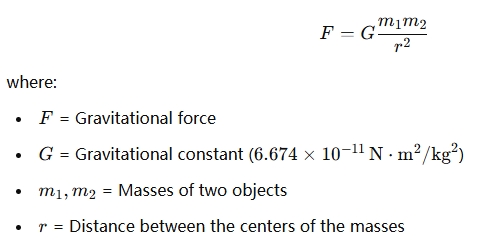Newton's Law of Gravitation Calculator
What is a Newton's Law of Gravitation Calculator?
A Newton's Law of Gravitation Calculator computes the gravitational force between two masses using the formula:

Why use a Newton's Law of Gravitation Calculator?
- To calculate gravitational attraction between objects (e.g., planets, satellites).
- To study celestial mechanics and astrophysics.
- To analyze gravitational effects in physics problems.
How does it work?
- Input the masses of two objects.
- Input the distance between them.
- The calculator computes the gravitational force.
When is it used?
- In astronomy and space science.
- In physics and engineering calculations.
- In satellite and orbital mechanics.